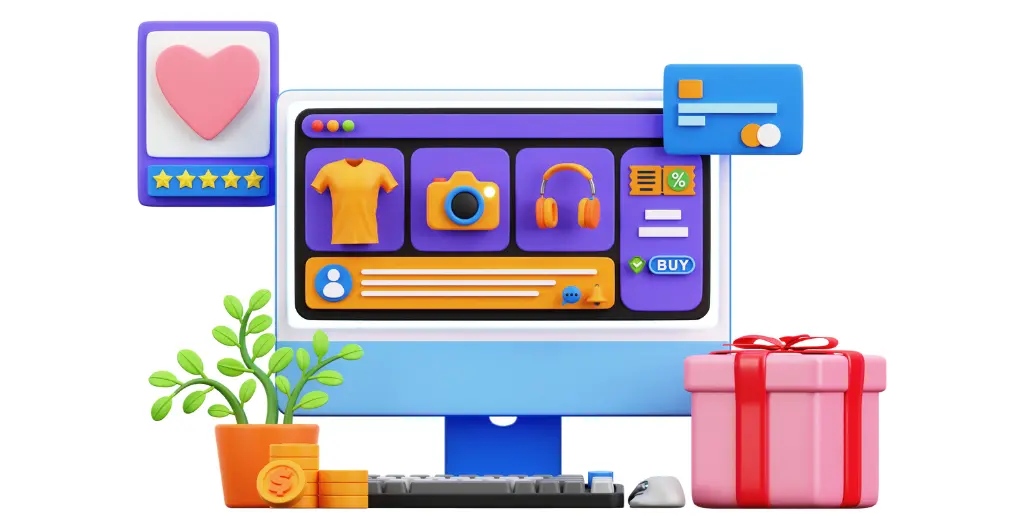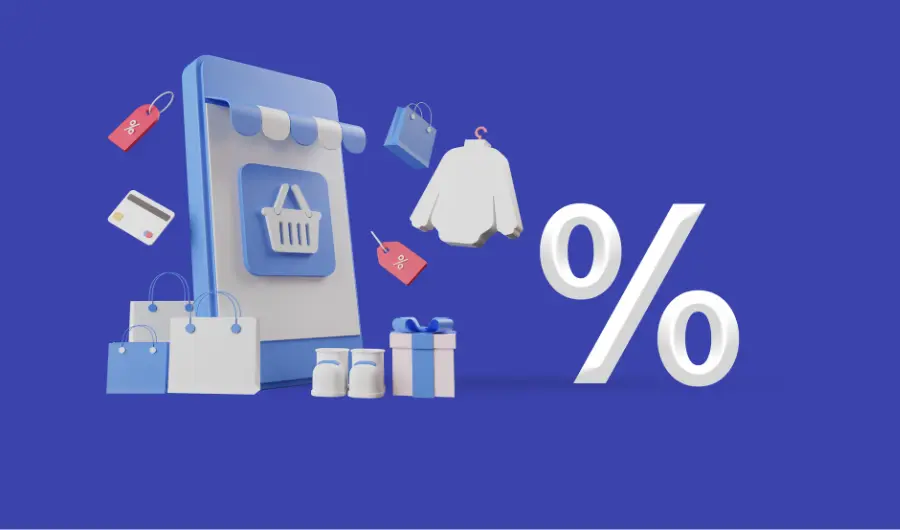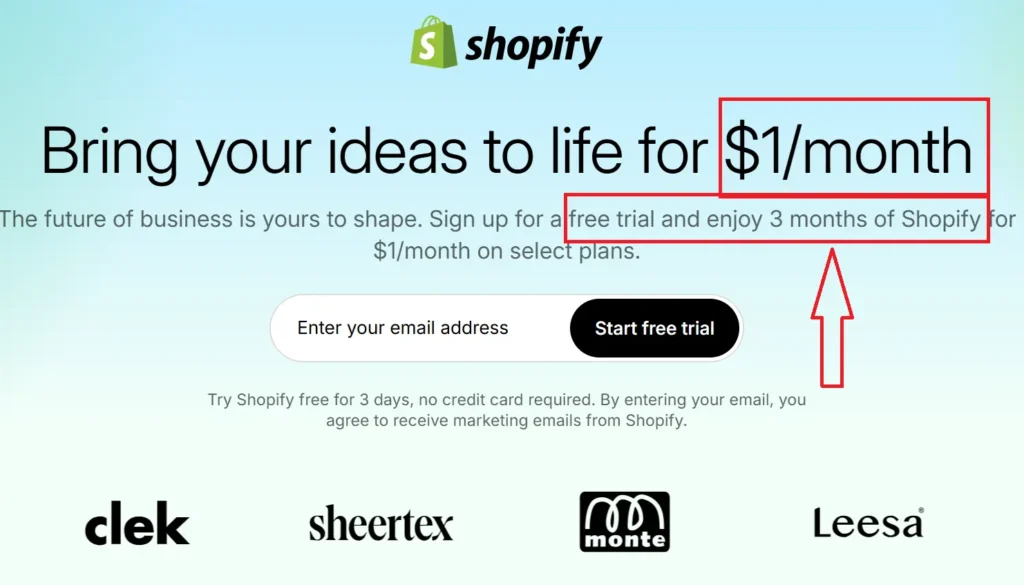If you’ve been thinking about diving into the world of online retail, you’re in the right place. The digital marketplace is booming, and traditional brick-and-mortar stores are quickly realizing they need an online presence to stay competitive.
Today, I’m going to walk you through everything you need to know about setting up and promoting your Shopify store to drive traffic, boost sales, and build a thriving online business.
Disclaimer: Our website is reader-supported. If you purchase any service through our partner links, we may earn a commission at no extra cost to you.
Why eCommerce Matters Now More Than Ever
Let’s face it – shopping habits have changed dramatically. People value convenience, and the ability to shop from their couch at 2 AM in their pajamas is pretty hard to beat! Online stores give you the power to reach customers far beyond your local area, and Shopify has emerged as one of the most user-friendly platforms to help you do just that.
How to Start Shopify Store: Getting Your Online Presence Off the Ground

Before we dive into promotion strategies, let’s make sure you have the basics down. Shopify makes it incredibly easy to launch an online store without any coding knowledge. The platform is designed to be intuitive even for complete beginners, which is why so many entrepreneurs choose it as their launching pad.
🚀The best part is that Shopify offers a 3-day free trial + 3 months of Shopify for just $1, so you can try out the entire platform risk-free!
👉 Click here to head over to Shopify, enter your email, and hit the “Start free trial” button
🔍Setting up your store involves a few critical steps:
1. Opt for a Suitable Domain Name
Your domain name is essentially your digital storefront address – it’s how customers will find and remember you. While Shopify provides you with a default domain (yourstorename.myshopify.com), you should definitely consider consider purchasing or integrating your own domain.
What makes for an excellent domain name? Here are a few pointers:
✅Keep it simple and memorable – Shorter domains (under 10 characters) are easier for customers to remember and type correctly
✅Skip the special characters – Avoid hyphens, numbers, and other punctuation marks that can confuse potential visitors
✅Make it brandable – Choose something unique that reflects your business identity
✅Include relevant keywords – If possible, incorporate terms that relate to your products or industry (but don’t force it)
✅Ensure it’s easy to spell – Avoid commonly misspelled words or unusual spellings that might lead customers to the wrong site
A strong domain name acts as your first impression online, so it’s worth taking the time to get it right!
2. Select and Customize Your Theme

Think of your store’s theme as its outfit – it’s what customers see when they visit. A polished, professional design builds trust and enhances the shopping experience.
🔍Shopify offers two routes:
🧩Use a premade theme from the Shopify Themes (both free and premium options available)
🧩Create a custom theme if you have specific design requirements
For most beginners, I’d recommend starting with a premade theme. The premium options (usually $100-$180) offer more customization and features, which can be worth the investment if your budget allows.
With these themes, you can easily adjust:
📍Color schemes to match your brand
📍Font styles and sizes
📍Homepage layout and featured elements
📍Product display options
📍Mobile responsiveness (super important as most shopping happens on phones!)
Remember, a clean, fast-loading site with intuitive navigation will always outperform a flashy but confusing one.
3. Add Your Products and Content

Now comes the fun part – stocking your digital shelves! Take time to thoughtfully add your products with:
✅High-quality images (multiple angles if possible)
✅Detailed, benefit-focused descriptions
✅Clear pricing information
✅Size guides, material details, care instructions, etc.
✅Honest shipping timelines
Organization is key for a good shopping experience, so use collections, tags, and filters to help customers find exactly what they’re looking for quickly.
How to Promote a Shopify Store: 8 Effective Strategies
Getting visitors to your Shopify store is just as important as setting it up. With the right strategies, you can attract more customers, increase sales, and build a successful brand. Here are eight effective ways to promote your store and grow your business!
1. Leverage Social Media Marketing
Social media is my absolute favorite way to connect with potential customers. You have two approaches here:
Leverage Social Media Marketing Social media is my absolute favorite way to connect with potential customers. You have two approaches here:
🌱Organic social media (free but requires consistency):
- Create content that showcases your products in real-life situations
- Share behind-the-scenes glimpses of your business
- Post customer reviews and testimonials
- Run engaging social media contests to boost followers and engagement
- Engage with followers through questions, polls, and comments
💰Paid social media advertising:
- Facebook and Instagram offer incredible targeting options based on demographics, interests, and behaviors
- Start with small budgets ($5-10/day) to test what works
- Create separate campaigns for different objectives (awareness, traffic, conversions)
- Use eye-catching visuals and clear calls-to-action
⚖️Each platform has its strengths:
- Facebook works well for most demographic groups and offers detailed targeting
- Instagram is perfect for visually appealing products and younger audiences
- Pinterest drives significant traffic for home goods, fashion, and DIY products
- TikTok can help you reach Gen Z with creative, entertaining content
💡My tip? Don’t try to be everywhere at once. Master one platform before expanding to others.
2. Build an Email Marketing Strategy

Despite all the new marketing channels popping up, email remains the highest ROI generator for most eCommerce businesses. Here’s how to make it work for your Shopify store:
✅Create a compelling opt-in offer (discount code, free guide, etc.) to build your list
✅Set up automated welcome sequences for new subscribers
✅Send regular newsletters featuring new products, helpful content, and exclusive offers
✅Segment your list based on purchase history and browsing behavior
✅Implement abandoned cart emails (these can recover up to 10% of lost sales!)
🔍Shopify has built-in email marketing features, but as you grow, you might want to explore dedicated platforms like Klaviyo or MailChimp for more advanced functionality.
3. Partner with Influencers
Influencer marketing isn’t just for big brands anymore! Even small Shopify stores can benefit from strategic partnerships:
🎯Look for micro-influencers (10K-50K followers) in your niche who have engaged audiences
🎯Focus on authentic partnerships rather than one-off sponsored posts
🎯Provide unique discount codes for their followers so you can track performance
🎯Consider product-for-post arrangements if your budget is limited
🎯Allow creative freedom (within guidelines) – they know their audience best
The magic of influencer marketing is the trust factor – when someone their audience trusts recommends your product, it carries far more weight than traditional advertising.
4. Create a Referral Program
Turn your happy customers into your marketing team! A well-designed referral program incentivizes word-of-mouth promotion:
⭐Offer rewards for both the referrer and the new customer
⭐Make sharing easy with pre-written messages and social media integration
⭐Choose rewards that align with your brand (discounts, free products, store credit)
⭐Celebrate successful referrals to encourage continued participation
The dual-sided reward structure is crucial – it makes existing customers feel appreciated while giving new ones an incentive to make their first purchase.
5. Optimize for Search Engines (SEO)

While Shopify handles some basic SEO automatically, taking it further can dramatically increase your organic traffic:
✅Research keywords relevant to your products and incorporate them naturally. If you’re not sure where to begin, check out these 5 best keyword research tools to find high-impact keywords for your niche.
✅Create unique product titles and descriptions – avoid using manufacturer copy.
✅Add alt text to all product and blog images.
✅Build a blog with helpful content related to your products and target audience.
✅Optimize site speed by compressing images and limiting unnecessary apps.
✅Structure your site logically with clear category pages and internal linking.
Remember, SEO is a long-term game – you may not see instant results, but the foundation you build today can bring in consistent traffic for years to come.
6. Run Contests and Giveaways
Everyone loves free stuff! Contests are a fantastic way to generate excitement and increase your reach:
📍Choose prizes that attract your ideal customers (not just anyone looking for freebies)
📍Keep entry requirements simple but include sharing as an option
📍Set a clear timeframe (2-4 weeks is usually ideal)
📍Follow up with entrants who didn’t win with a special offer
📍Time your contests around product launches or seasonal events
I’ve found that contests work best when they’re occasional special events rather than a constant strategy – this keeps them feeling exclusive and exciting.
7. Offer Strategic Discounts and Promotions

Discounting strategically (not constantly) can drive sales without devaluing your products:
📍First-time purchase discounts to convert browsers into buyers
📍Limited-time flash sales to create urgency
📍Bundle deals to increase average order value
📍Free shipping thresholds to encourage larger purchases
📍Seasonal promotions aligned with shopping holidays
Shopify’s discount code system makes this easy to implement and track, so you can see exactly which promotions drive the most revenue.
8. Build Trust with Reviews and Support
In the online world, trust is everything. Since customers can’t touch or try your products before buying, you need to build confidence in other ways:
✅Actively collect and display customer reviews
✅Respond to all reviews (especially negative ones) professionally
✅Offer live chat support during peak shopping hours
✅Create detailed FAQs and product information
✅Establish clear, customer-friendly policies for shipping, returns, and exchanges
Going above and beyond with customer service creates brand advocates who will recommend you to others – there’s no better marketing than that!
Measuring Your Results
All this promotion won’t mean much if you’re not tracking what works. Keep an eye on these key metrics:
🎯Traffic sources – Where are your visitors coming from?
🎯Conversion rate – What percentage of visitors make a purchase?
🎯Customer acquisition cost (CAC) – How much are you spending to get each new customer?
🎯Average order value (AOV) – How much does the typical customer spend?
🎯Customer lifetime value (CLV) – How much does a customer spend over their relationship with your brand?
🎯Return on ad spend (ROAS) – For every dollar spent on advertising, how much revenue do you generate?
Shopify’s analytics dashboard provides most of these metrics, and you can dive deeper with Google Analytics integration.
👉 Click here to head over to Shopify, enter your email, and hit the “Start free trial” button
Wrapping Up
Building and promoting a Shopify store isn’t an overnight process, but with consistent effort across these channels, you’ll start to see momentum build. Remember the “rule of seven” in marketing – most people need to encounter your brand about seven times before making a purchase decision. This is why using multiple promotion strategies in combination is so powerful.
The beauty of Shopify is that it handles all the technical complexities, allowing you to focus on creating great products and marketing them effectively. You don’t need coding skills or a massive budget – just creativity, persistence, and a willingness to learn as you go.
Have you started your Shopify journey yet? Which promotion strategy are you most excited to try? Drop me a comment below – I’d love to hear about your eCommerce adventures!
🚀 Want to promote your Shopify store the right way? Kick things off with 3 months for just $1 — Get Started Now.

